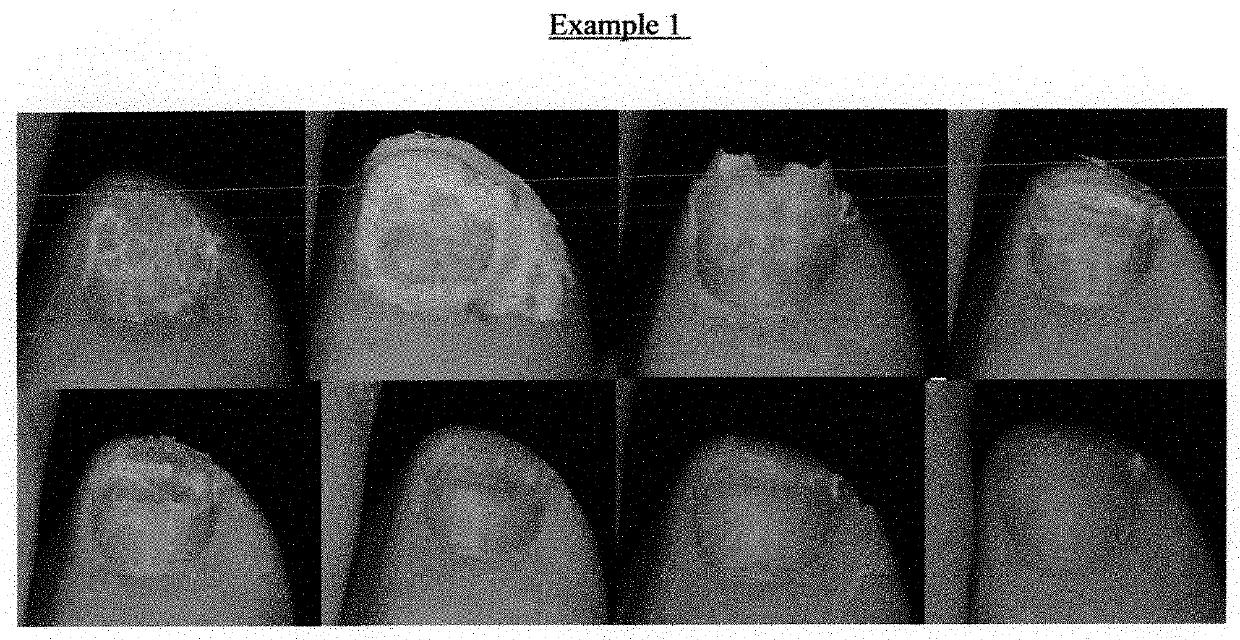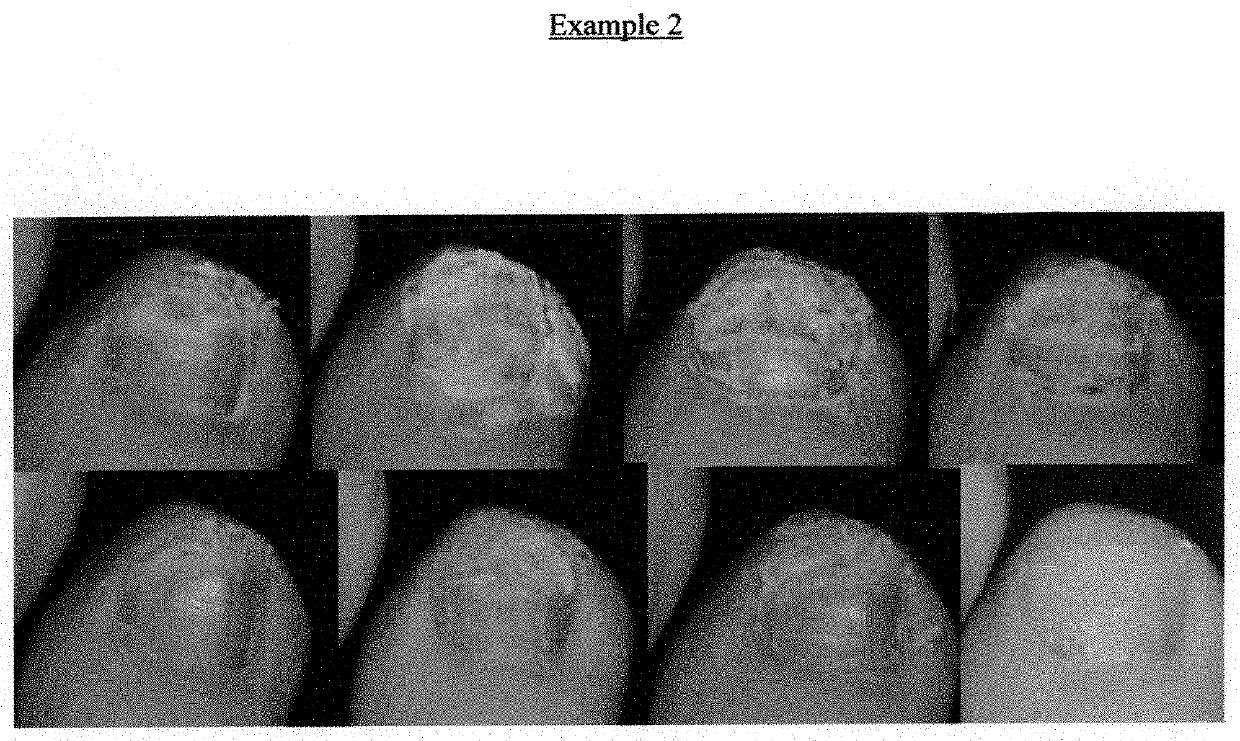Treatment Methods and Processes for an Infected Nail
a treatment method and nail technology, applied in the field of infected nail treatment methods and processes, can solve the problems of toxic side effects, diabetics are at risk of limb amputation, diabetes is especially risky for diabetics, etc., and achieves the effect of optimizing cure rates and convenience, minimizing treatment time and patient risk
- Summary
- Abstract
- Description
- Claims
- Application Information
AI Technical Summary
Benefits of technology
Problems solved by technology
Method used
Image
Examples
example 1
[0047]A subject having a nail infection diagnosis of a Trichophyton genus was treated using a variety of the methods taught herein. The presence of hyphae in the subject was consistent with Trichophyton Rubrum and or Trichophyton Mentagrophytes (the diagnosis of mixed infections is difficult to determine accurately). Nails infected with these organisms also produce a chronic type of tinea pedis. Infections involving the interdigital areas can produce erythema, fissuring, and may extend into other portions of the hand or foot.
[0048]In this example, the infected nail was periodically trimmed during the 90 day treatment period and pretreated with 30% salicylic acid once daily. Following pretreatment, the infected nail was soaked in a mixture of 0.10% bis (hydrogenated tallow alkyl) dimethyl quaternary chlorides and 0.15% poly(hexamethylenebiguanide) hydrochloride in water and heated above nail temperature (approximately 40° C.) for 10 to 15 minutes daily during the treatment period.
example 2
[0049]A subject having a nail infection diagnosis of a Trichophyton genus was treated using a variety of the methods taught herein. The presence of hyphae in the subject was consistent with Trichophyton Rubrum and or Trichophyton Mentagrophytes (the diagnosis of mixed infections is difficult to determine accurately). Nails infected with these organisms also produce a chronic type of tinea pedis. Infections involving the interdigital areas can produce erythema, fissuring, and may extend into other portions of the hand or foot.
[0050]In this example, the infected nail was periodically trimmed during the 90 day treatment period. After trimming, the infected nail was soaked in a mixture of 30% salicylic acid, 0.10% bis (hydrogenated tallow alkyl) dimethyl quaternary chlorides and 0.15% poly(hexamethylenebiguanide) hydrochloride in water and heated above nail temperature (approximately 40° C.) for 10 to 15 minutes daily during the treatment period.
[0051]Examples 1 and 2 show the successfu...
PUM
| Property | Measurement | Unit |
|---|---|---|
| temperature | aaaaa | aaaaa |
| temperature | aaaaa | aaaaa |
| temperature | aaaaa | aaaaa |
Abstract
Description
Claims
Application Information
 Login to View More
Login to View More - R&D
- Intellectual Property
- Life Sciences
- Materials
- Tech Scout
- Unparalleled Data Quality
- Higher Quality Content
- 60% Fewer Hallucinations
Browse by: Latest US Patents, China's latest patents, Technical Efficacy Thesaurus, Application Domain, Technology Topic, Popular Technical Reports.
© 2025 PatSnap. All rights reserved.Legal|Privacy policy|Modern Slavery Act Transparency Statement|Sitemap|About US| Contact US: help@patsnap.com


